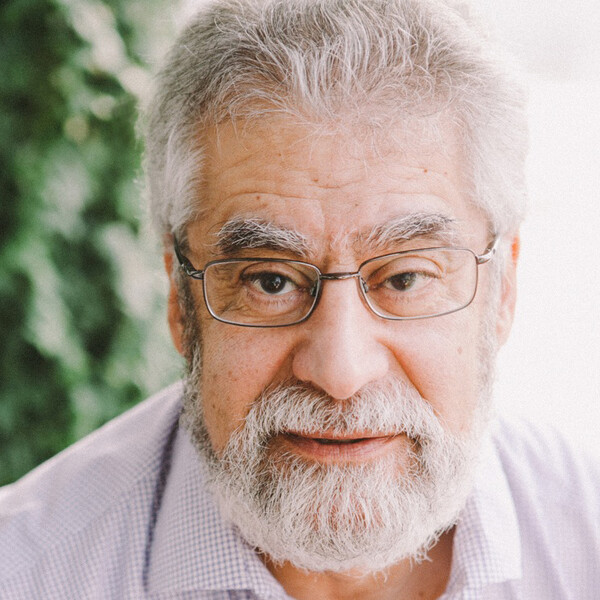Main Second Level Navigation
Michael Sefton
O.C.

Qualification
- Massachusetts Institute of Technology, Cambridge, MA, U.S., ScD in Chemical Engineering, 1974.
- University of Toronto, BASc in Chemical Engineering and Applied Chemistry, 1971.
MY RESEARCH OVERVIEW (GO TO SCIENTIFIC OVERVIEW)
Tissue Engineering
It is not science fiction to say that one day, patients will have access to lab-grown body parts. In fact, that is my lab’s ultimate goal—to be able to grow completely functioning human organs. We practise tissue engineering and regenerative medicine, and are interested in the effect of biomaterials on biological responses. We are especially interested in inflammation, tissue remodeling and new blood vessel development (angiogenesis).
Thanks to my lab’s pioneering work in tissue engineering, my team has been among the first to explore the mixing of cells and materials, now with a view to create new tissue structures ranging from an artificial pancreas to cardiac patches. The materials and strategies we explore are being studied for their utility in a range of medical devices ranging from drug eluting stents to wound dressings. The results of some of this work are already available to patients.
As part of the Donnelly Centre, it will be possible to adapt high throughput biological methodologies to discover new materials, or new targets for existing materials. Collaboration is a very effective way to explore novel concepts and materials. Working in the Donnelly Centre is useful to push the frontier further back into the basics of biological interactions.
Visit Dr. Michael Sefton's Discover Research profile to learn more.
SCIENTIFIC RESEARCH OVERVIEW
The central theme is that biomaterials and biomaterial based devices (e.g. cell microcapsules, tissue engineering scaffolds) are agonists of biological responses. These responses include thrombosis ("clotting"), inflammation, immune responses, matrix remodelling, angiogenesis, wound healing; i.e., all aspects of a host response to an implanted material or device. The material is an agonist, much like small molecule drugs; however, the materials are 3-dimensional objects acting across an interface so that the mechanism of action is more complex and our understanding of what is happening is more rudimentary than it is for small molecules. Hence, our challenge is to translate what is known about biological mechanisms with small molecule agonists into a picture of what is occurring with the biomaterial.
Special emphasis is given to Tissue Engineering and Regenerative Medicine. We have a novel strategy for creating scaffolds using modular components that are then vascularised by endothelial cell (EC) seeding. Growing a capillary bed is a critical step towards growing large tissue structures such as entire heart since diffusion limitations require cells to be within one hundred microns of a blood supply.
Current projects in the lab include:
1. Modular Tissue Engineering
Modular tissue engineering is based on the porous structure that is created when a column or tube is packed, randomly, with solid objects (here, short cylindrical rods). In a very much larger scale, such packed columns are standard pieces of chemical engineering process equipment. We have adapted this geometry for tissue engineering. Functional cells (eg cardiomyocytes, liver, fat cells) are encapsulated in collagen gel rods (~400 mm diameter, aspect ratio 1.5 in current prototype) on to which endothelial cells (eg., HUVEC) are seeded. These collagen modules (containing cells) are then randomly packed into the construct. The interstitial gaps among the rods form interconnected channels which become lined by the endothelial cells. The resulting endothelial cell lining enables whole blood to percolate around the rods and through these interstitial channels. Current efforts have demonstrated the principle of modular tissue engineering in vitro and have, for example, elicited the design rules underscoring the scalable nature of the modular approach.
Current and future projects address the following questions: Does modular tissue engineering benefit the treatment of diabetes with embedded pancreatic islets or pancreatic precursors? What happens in vivo? How do the transplanted endothelial cells connect to the host vasculature after subcutaneous implantation? How do we adapt modular tissue engineering for preparing liver tissue? What limits endothelial cells survival after transplantation? Is it apoptosis? Immune response? Can we enhance endothelial cells survival by genetically modifying the cells? How do we exploit microfluidic technologies for exploring the mechanism of remodeling?
2. Biomaterial associated angiogenesis
Therapeutic angiogenesis using growth factors such as VEGF is being explored by others to enhance perfusion in ischemic limbs and hearts as well as in engineered tissues and in chronic wound care. Surprisingly beads made from a methacrylic acid (MAA) copolymer caused new blood vessels to grow without any exogenous growth factors. These new vessels were functional in that they saved a full thickness rat skin graft from necrosis, while a skin graft placed over control beads without MAA died due to the absence of the polymer associated angiogenesis. How these beads cause blood vessels to grow is a mystery that remains to be solved: we have some clues but not enough to tell a good story. This copolymer is the first example of a therapeutic polymer (Theramer), a polymer that has therapeutic effects but without any immobilized, entrapped or released pharmacological agent. Current and future projects are: understand the molecular basis of biomaterial associated angiogenesis, delineate the benefits of biomaterial associated angiogenesis in skin and other wound healing scenarios, create biomaterial scaffolds or degradable materials with angiogenic characteristics, characterize vessel structure and flow in biomaterial associated angiogenesis.
SELECT PUBLICATIONS
- Unbiased phosphoproteomic method identifies the initial effects of a methacrylic acid copolymer on macrophages. Chamberlain MD, Wells LA, Lisovsky A, Guo H, Isserlin R, Talior-Volodarsky I, Mahou R, Emili A, Sefton MV. Proc Natl Acad Sci U S A. 2015 Aug 10.
- A novel high-speed production process to create modular components for the bottom-up assembly of large-scale tissue-engineered constructs. Khan OF, Voice DN, Leung BM, Sefton MV. Adv Healthc Mater. 2015 Jan 7;4(1):113-20.
- Del-1 overexpression in endothelial cells increases vascular density in tissue-engineered implants containing endothelial cells and adipose-derived mesenchymal stromal cells. Ciucurel EC, Sefton MV. Tissue Eng Part A. 2014 Apr;20(7-8):1235-52.
